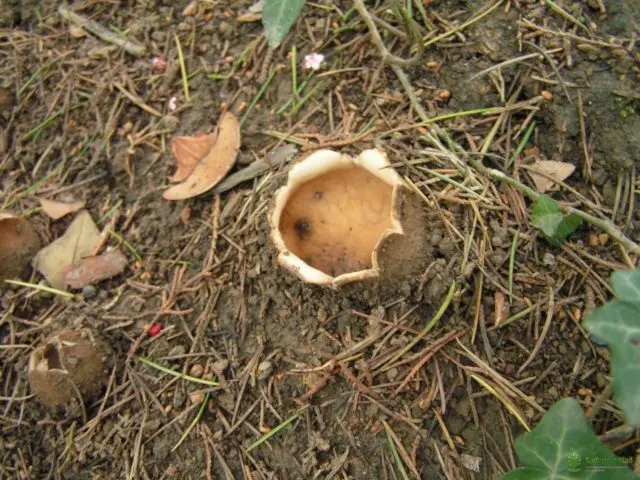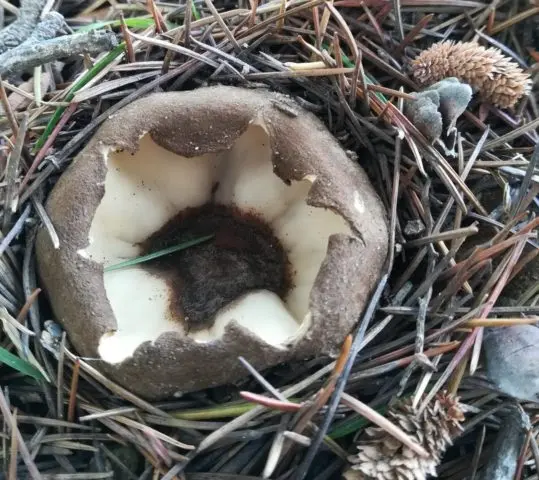Contents
The representative of the department Ascomycetes geopore Sumner is known by several Latin names: Sepultaria sumneriana, Lachnea sumneriana, Peziza sumneriana, Sarcosphaera sumneriana. It grows from the southern regions to the European part of the Federation, the main cluster is in Siberia. An earth mushroom with an exotic appearance is not used for gastronomic purposes.
What does the Sumner Geopore look like?
The Sumner geopore forms a fruiting body that lacks a stalk. The initial stage of development takes place under the topsoil. Young specimens are spherical in shape, as they grow, they appear on the surface of the soil in the form of a dome. By the time of ripening, they completely come out of the ground and open.


The external characteristic is as follows:
- fruit body in diameter – 5-7 cm, height – up to 5 cm;
- shape in the form of a bowl with serrated curved rounded edges, does not open to a prostrate state;
- the walls are thick, fragile;
- the surface of the outer part is brown or dark beige with a densely located, long and narrow pile, especially pronounced in young representatives;
- the inside is glossy with a smooth spore-bearing layer, cream or white with a gray tint;
- the pulp is light, dense, dry, brittle;
- spores are rather large, white.
Where does the Sumner Geopore grow?
The species belongs to spring mushrooms, the initial formation of fruiting bodies occurs in mid-March, if the spring is cold, then this is the first half of April.
It is found in the European part and the southern regions of the Federation. In Crimea, single specimens can be seen in mid-February. Forms a symbiosis only with cedar. It grows in small groups in coniferous massifs or city alleys where this tree coniferous species is found.
Among the Ascomycetes, Sumner’s geopore is the largest representative. It differs from the geopore in pine size.

There is a similar representative in symbiosis only with pine. Distributed in the southern climatic zone, found mainly in the Crimea. Fruiting is winter, the mushroom appears on the surface in January or February. The small fruit body is dark brown with less pronounced ragged teeth along the edge. The central part inside is black or brown. Refers to inedible mushrooms. Therefore, there is no need to distinguish representatives.
Can You Eat Geopore Sumner
There is no information on toxicity. The fruiting bodies are small, the pulp is fragile, in adult specimens it is quite hard, it is of no nutritional value. A mushroom with a complete lack of taste, it is dominated by the smell of rotten coniferous litter or the soil on which it grows, belongs to the group of inedible species.
Conclusion
Geopore Sumner grows only under cedars, characterized by an exotic appearance. It does not represent gastronomic value, it is included in the category of inedible mushrooms, it is not used for food processing. Fruits in early spring, appears in small groups.









